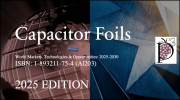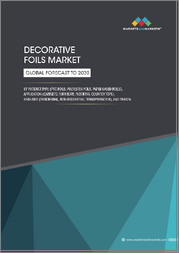
|
시장보고서
상품코드
1561523
세계의 그래픽 필름 시장 보고서 : 폴리머, 필름 유형, 인쇄 기술, 최종 용도, 지역별(2024-2032년)Graphic Film Market Report by Polymer (Polyvinylchloride, Polypropylene, Polyethylene, and Others), Film Type, Printing Technology, End Use, and Region 2024-2032 |
||||||
세계 그래픽 필름 시장 규모는 2023년 290억 달러에 달했습니다. 향후 IMARC Group은 2032년까지 시장이 2024년부터 2032년까지 3.8%의 연평균 성장률(CAGR)로 2032년까지 411억 달러에 달할 것으로 예상했습니다. 브랜딩 및 마케팅에 대한 수요 증가, 자동차 산업에서 그래픽 필름의 대중화, 상업 및 주거 환경에서 그래픽 필름의 인기 증가는 시장을 이끄는 주요 요인 중 일부입니다.
그래픽 필름은 시각적 커뮤니케이션 또는 모션 그래픽으로도 알려져 있으며, 스토리나 메시지를 전달하기 위해 디자인, 애니메이션, 영화 촬영을 결합한 창의적인 표현의 일종입니다. 전통적 애니메이션, CGI, 컷 애니메이션, 실사 영상 등 다양한 기법으로 제작됩니다. 시각, 텍스트, 애니메이션을 활용해 복잡한 아이디어나 감정을 관객에게 알기 쉽게 전달하기도 합니다. 또한, 상품이나 서비스를 홍보하기 위한 마케팅이나 광고에도 자주 사용됩니다. 광고주는 애니메이션과 모션 그래픽을 활용하여 시청자의 시선을 사로잡는 시각적 광고를 제작하고, 제품이나 서비스의 특징과 장점을 효과적으로 설명할 수 있습니다. 그 결과, 그래픽 필름은 디자인, 애니메이션, 영화 촬영을 결합하여 시각적으로 매력적이고 감정 이입이 쉬운 영화를 제작하는 강력한 영상 표현 형식이기 때문에 전 세계적으로 널리 주목받고 있습니다.
그래픽 필름 시장 동향 :
브랜딩과 마케팅에 대한 수요 증가가 세계 시장을 주도하고 있습니다. 이는 소셜 미디어와 디지털 마케팅의 인기가 높아짐에 따라 브랜딩 및 마케팅 자료에 대한 수요가 크게 증가하고 있다는 사실에서도 알 수 있습니다. 많은 기업들이 광고와 홍보물에 사용할 수 있는 눈길을 끄는 매력적인 그래픽을 제작하기 위해 다른 소재보다 그래픽 필름을 선호하고 있습니다. 또한, 그래픽 필름은 매장, 차량 랩핑 및 기타 유형의 간판에 널리 사용되는 맞춤형 그래픽 제작에 광범위하게 사용되고 있는 점도 시장을 주도하고 있습니다. 또한, 자동차 업계에서는 내구성이 뛰어나고 맞춤형 디자인 인쇄가 가능하기 때문에 자동차 업계에서 데칼 제작에 그래픽 필름을 널리 사용하고 있습니다. 또한, 자연 채광을 받아들이면서 태양열 상승과 눈부심을 줄이고 건물의 에너지 효율을 높이기 위해 상업용 및 주거용 모두에서 그래픽 필름의 인기가 높아지고 있는 것도 시장을 크게 뒷받침하고 있습니다. 이와는 별도로, 많은 주요 제조업체들이 생분해성 플라스틱 및 재활용 가능한 재료와 같은 재생 가능한 재료로 친환경 필름을 개발하여 지속 가능하고 환경 친화적인 제품을 만드는 데 주력하고 있으며, 이는 세계 수준 수요를 주도하고 있습니다. 또한 비닐, 폴리 에스테르 및 기타 플라스틱 필름과 같은 다양한 재료에 고해상도 그래픽을 생성하는 인쇄 기술의 지속적인 발전은 시장의 긍정적인 전망을 창출하고 있습니다.
본 보고서에서 다룬 주요 질문
- 그래픽 필름 시장 세계 시장 규모는?
- 2024-2032년 세계 그래픽 필름 시장 성장률 전망은?
- 세계 그래픽 필름 시장을 이끄는 주요 요인은?
- 코로나19가 세계 그래픽 필름 시장에 미치는 영향은?
- 세계 그래픽 필름 시장의 폴리머별 시장 현황은?
- 세계 그래픽 필름 시장의 필름 유형별 시장 현황은?
- 세계 그래픽 필름 시장의 인쇄 기술별 시장 현황은?
- 그래픽 필름 시장의 세계 최종 용도별 시장 현황은?
- 그래픽 필름 시장의 세계 주요 지역은?
- 세계 그래픽 필름 시장의 주요 기업은?
목차
제1장 서문
제2장 조사 범위와 조사 방법
- 조사 목적
- 이해관계자
- 데이터 소스
- 1차 정보
- 2차 정보
- 시장 추정
- 보텀업 접근
- 톱다운 접근
- 조사 방법
제3장 주요 요약
제4장 서론
- 개요
- 주요 업계 동향
제5장 세계의 그래픽 필름 시장
- 시장 개요
- 시장 실적
- COVID-19의 영향
- 시장 예측
제6장 시장 분석 : 폴리머별
- 폴리염화비닐(PVC)
- 시장 동향
- 시장 예측
- 폴리프로필렌(PP)
- 시장 동향
- 시장 예측
- 폴리에틸렌(PE)
- 시장 동향
- 시장 예측
- 기타
- 시장 동향
- 시장 예측
제7장 시장 분석 : 필름 유형별
- 반사
- 시장 동향
- 시장 예측
- 불투명
- 시장 동향
- 시장 예측
- 투명
- 시장 동향
- 시장 예측
- 반투명
- 시장 동향
- 시장 예측
제8장 시장 분석 : 인쇄 기술별
- 그라비어 인쇄
- 시장 동향
- 시장 예측
- 프렉소 인쇄
- 시장 동향
- 시장 예측
- 오프셋
- 시장 동향
- 시장 예측
- 디지털
- 시장 동향
- 시장 예측
제9장 시장 분석 : 최종 용도별
- 프로모션과 광고
- 시장 동향
- 시장 예측
- 자동차
- 시장 동향
- 시장 예측
- 기타
- 시장 동향
- 시장 예측
제10장 시장 분석 : 지역별
- 북미
- 미국
- 캐나다
- 아시아태평양
- 중국
- 일본
- 인도
- 한국
- 호주
- 인도네시아
- 기타
- 유럽
- 독일
- 프랑스
- 영국
- 이탈리아
- 스페인
- 러시아
- 기타
- 라틴아메리카
- 브라질
- 멕시코
- 기타
- 중동 및 아프리카
- 시장 동향
- 시장 분석 : 국가별
- 시장 예측
제11장 SWOT 분석
- 개요
- 강점
- 약점
- 기회
- 위협
제12장 밸류체인 분석
제13장 Porter의 Five Forces 분석
- 개요
- 바이어의 교섭력
- 공급 기업의 교섭력
- 경쟁 정도
- 신규 진출업체의 위협
- 대체품의 위협
제14장 가격 분석
제15장 경쟁 구도
- 시장 구조
- 주요 기업
- 주요 기업 개요
- 3M Company
- Achilles Corporation
- Arlon Graphics LLC(FLEXcon Company Inc.)
- Avery Dennison Corporation
- CCL Industries Inc.
- Constantia Flexibles Group
- Drytac Corporation
- DUNMORE Corporation(API Group)
- DuPont de Nemours Inc.
- FDC Graphic Films Inc.
- Hexis S.A.
- Kay Premium Marking Films Ltd.(ORAFOL Europe GmbH)
The global graphic film market size reached US$ 29.0 Billion in 2023. Looking forward, IMARC Group expects the market to reach US$ 41.1 Billion by 2032, exhibiting a growth rate (CAGR) of 3.8% during 2024-2032. The increasing demand for branding and marketing, the widespread adoption of graphic film in the automotive industry, and the growing popularity of graphic films in both commercial and residential settings are some of the key factors driving the market.
Graphic film, also known as visual communication or motion graphics, is a type of creative expression that combines design, animation, and cinematography to tell a story or convey a message. It is produced utilizing various methods, such as traditional animation, computer-generated imagery (CGI), stop-motion animation, and live-action video. It may communicate complicated ideas and emotions in a way that audiences can easily understand by using visuals, text, and animation. Additionally, it is frequently used in marketing and advertising to advertise goods or services. Advertisers can produce visually arresting advertising that captures viewers' attention and effectively explain the characteristics and benefits of a product or service by utilizing animation and motion graphics. As a result, it is gaining widespread prominence across the globe since graphic film is a potent form of visual expression that combines design, animation, and cinematography to produce visually attractive and emotionally compelling films.
Graphic Film Market Trends:
The escalating demand for branding and marketing majorly drives the global market. This can be supported by the rising popularity of social media and digital marketing that leads to a significant increase in demand for branding and marketing materials. In order to produce eye-catching and compelling graphics for use in advertising and promotional materials, many businesses are preferring graphic films over other materials. The market is further driven by the extensive utilization of graphic films in the manufacturing of custom graphics widely used for storefronts, vehicle wraps, and other kinds of signs. Along with this, the widespread adoption of graphic film in the automotive industry for producing decals as it is highly durable and can be printed with custom designs. In addition, the growing popularity of graphic films in both commercial and residential settings to enhance the energy efficiency of buildings by reducing solar heat gain and glare, while still allowing natural light to enter is significantly supporting the market. Apart from this, numerous leading manufacturers are focusing on creating sustainable and environmentally friendly products by developing eco-friendly films from renewable materials, such as biodegradable plastics and recyclable materials are driving the demand on the global level. Furthermore, continual advancements in printing technology to produce high-resolution graphics on a variety of materials, including vinyl, polyester, and other plastic films are creating a positive market outlook.
Key Market Segmentation:
IMARC Group provides an analysis of the key trends in each sub-segment of the global graphic film market report, along with forecasts at the global, regional and country level from 2024-2032. Our report has categorized the market based on polymer, film type, printing technology and end use.
Polymer Insights:
- Polyvinylchloride (PVC)
- Polypropylene (PP)
- Polyethylene (PE)
- Others
The report has provided a detailed breakup and analysis of the graphic film market based on the polymer. This includes polyvinylchloride (PVC), polypropylene (PP), polyethylene (PE), and others. According to the report, polyvinylchloride (PVC) represented the largest segment.
Film Type Insights:
- Reflective
- Opaque
- Transparent
- Translucent
A detailed breakup and analysis of the graphic film market based on the film type have also been provided in the report. This includes reflective, opaque, transparent, and translucent. Amongst these, opaque represents the largest segment.
Printing Technology Insights:
- Rotogravure
- Flexography
- Offset
- Digital
The report has provided a detailed breakup and analysis of the graphic film market based on the printing technology. This includes rotogravure, flexography, offset, and digital. According to the report, flexography represented the largest segment.
End Use Insights:
- Promotional and Advertisement
- Automotive
- Others
A detailed breakup and analysis of the graphic film market based on the end use have also been provided in the report. This includes promotional and advertisement, automotive, and others. Amongst these, promotional and advertisement represent the largest segment.
Regional Insights:
- North America
- United States
- Canada
- Asia-Pacific
- China
- Japan
- India
- South Korea
- Australia
- Indonesia
- Others
- Europe
- Germany
- France
- United Kingdom
- Italy
- Spain
- Russia
- Others
- Latin America
- Brazil
- Mexico
- Others
- Middle East and Africa
The report has also provided a comprehensive analysis of all the major regional markets, which include North America (United States, Canada); Asia-Pacific (China, Japan, India, South Korea, Australia, Indonesia, others); Europe (Germany, France, United Kingdom, Italy, Spain, Russia, others); Latin America (Brazil, Mexico, others); and the Middle East and Africa. According to the report, Asia-Pacific was the largest market for the graphic film. Some of the factors driving Asia-Pacific graphic film market included rapid industrialization, significant growth in the automotive industry, continual technological advancements, etc.
Competitive Landscape:
The report has also provided a comprehensive analysis of the competitive landscape in the global graphic film market. Competitive analysis such as market structure, market share by key players, player positioning, top winning strategies, competitive dashboard, and company evaluation quadrant has been covered in the report. Also, detailed profiles of all major companies have been provided. Some of the companies covered are 3M Company, Achilles Corporation, Arlon Graphics LLC (FLEXcon Company Inc.), Avery Dennison Corporation, CCL Industries Inc., Constantia Flexibles Group, Drytac Corporation, DUNMORE Corporation (API Group), DuPont de Nemours Inc., FDC Graphic Films Inc., Hexis S.A. and Kay Premium Marking Films Ltd. (ORAFOL Europe GmbH). Kindly note that this only represents a partial list of companies, and the complete list has been provided in the report.
Key Questions Answered in This Report
- 1. How big is the global graphic film market?
- 2. What is the expected growth rate of the global graphic film market during 2024-2032?
- 3. What are the key factors driving the global graphic film market?
- 4. What has been the impact of COVID-19 on the global graphic film market?
- 5. What is the breakup of the global graphic film market based on the polymer?
- 6. What is the breakup of the global graphic film market based on the film type?
- 7. What is the breakup of the global graphic film market based on the printing technology?
- 8. What is the breakup of the global graphic film market based on the end use?
- 9. What are the key regions in the global graphic film market?
- 10. Who are the key players/companies in the global graphic film market?
Table of Contents
1 Preface
2 Scope and Methodology
- 2.1 Objectives of the Study
- 2.2 Stakeholders
- 2.3 Data Sources
- 2.3.1 Primary Sources
- 2.3.2 Secondary Sources
- 2.4 Market Estimation
- 2.4.1 Bottom-Up Approach
- 2.4.2 Top-Down Approach
- 2.5 Forecasting Methodology
3 Executive Summary
4 Introduction
- 4.1 Overview
- 4.2 Key Industry Trends
5 Global Graphic Film Market
- 5.1 Market Overview
- 5.2 Market Performance
- 5.3 Impact of COVID-19
- 5.4 Market Forecast
6 Market Breakup by Polymer
- 6.1 Polyvinylchloride (PVC)
- 6.1.1 Market Trends
- 6.1.2 Market Forecast
- 6.2 Polypropylene (PP)
- 6.2.1 Market Trends
- 6.2.2 Market Forecast
- 6.3 Polyethylene (PE)
- 6.3.1 Market Trends
- 6.3.2 Market Forecast
- 6.4 Others
- 6.4.1 Market Trends
- 6.4.2 Market Forecast
7 Market Breakup by Film Type
- 7.1 Reflective
- 7.1.1 Market Trends
- 7.1.2 Market Forecast
- 7.2 Opaque
- 7.2.1 Market Trends
- 7.2.2 Market Forecast
- 7.3 Transparent
- 7.3.1 Market Trends
- 7.3.2 Market Forecast
- 7.4 Translucent
- 7.4.1 Market Trends
- 7.4.2 Market Forecast
8 Market Breakup by Printing Technology
- 8.1 Rotogravure
- 8.1.1 Market Trends
- 8.1.2 Market Forecast
- 8.2 Flexography
- 8.2.1 Market Trends
- 8.2.2 Market Forecast
- 8.3 Offset
- 8.3.1 Market Trends
- 8.3.2 Market Forecast
- 8.4 Digital
- 8.4.1 Market Trends
- 8.4.2 Market Forecast
9 Market Breakup by End Use
- 9.1 Promotional and Advertisement
- 9.1.1 Market Trends
- 9.1.2 Market Forecast
- 9.2 Automotive
- 9.2.1 Market Trends
- 9.2.2 Market Forecast
- 9.3 Others
- 9.3.1 Market Trends
- 9.3.2 Market Forecast
10 Market Breakup by Region
- 10.1 North America
- 10.1.1 United States
- 10.1.1.1 Market Trends
- 10.1.1.2 Market Forecast
- 10.1.2 Canada
- 10.1.2.1 Market Trends
- 10.1.2.2 Market Forecast
- 10.1.1 United States
- 10.2 Asia-Pacific
- 10.2.1 China
- 10.2.1.1 Market Trends
- 10.2.1.2 Market Forecast
- 10.2.2 Japan
- 10.2.2.1 Market Trends
- 10.2.2.2 Market Forecast
- 10.2.3 India
- 10.2.3.1 Market Trends
- 10.2.3.2 Market Forecast
- 10.2.4 South Korea
- 10.2.4.1 Market Trends
- 10.2.4.2 Market Forecast
- 10.2.5 Australia
- 10.2.5.1 Market Trends
- 10.2.5.2 Market Forecast
- 10.2.6 Indonesia
- 10.2.6.1 Market Trends
- 10.2.6.2 Market Forecast
- 10.2.7 Others
- 10.2.7.1 Market Trends
- 10.2.7.2 Market Forecast
- 10.2.1 China
- 10.3 Europe
- 10.3.1 Germany
- 10.3.1.1 Market Trends
- 10.3.1.2 Market Forecast
- 10.3.2 France
- 10.3.2.1 Market Trends
- 10.3.2.2 Market Forecast
- 10.3.3 United Kingdom
- 10.3.3.1 Market Trends
- 10.3.3.2 Market Forecast
- 10.3.4 Italy
- 10.3.4.1 Market Trends
- 10.3.4.2 Market Forecast
- 10.3.5 Spain
- 10.3.5.1 Market Trends
- 10.3.5.2 Market Forecast
- 10.3.6 Russia
- 10.3.6.1 Market Trends
- 10.3.6.2 Market Forecast
- 10.3.7 Others
- 10.3.7.1 Market Trends
- 10.3.7.2 Market Forecast
- 10.3.1 Germany
- 10.4 Latin America
- 10.4.1 Brazil
- 10.4.1.1 Market Trends
- 10.4.1.2 Market Forecast
- 10.4.2 Mexico
- 10.4.2.1 Market Trends
- 10.4.2.2 Market Forecast
- 10.4.3 Others
- 10.4.3.1 Market Trends
- 10.4.3.2 Market Forecast
- 10.4.1 Brazil
- 10.5 Middle East and Africa
- 10.5.1 Market Trends
- 10.5.2 Market Breakup by Country
- 10.5.3 Market Forecast
11 SWOT Analysis
- 11.1 Overview
- 11.2 Strengths
- 11.3 Weaknesses
- 11.4 Opportunities
- 11.5 Threats
12 Value Chain Analysis
13 Porters Five Forces Analysis
- 13.1 Overview
- 13.2 Bargaining Power of Buyers
- 13.3 Bargaining Power of Suppliers
- 13.4 Degree of Competition
- 13.5 Threat of New Entrants
- 13.6 Threat of Substitutes
14 Price Analysis
15 Competitive Landscape
- 15.1 Market Structure
- 15.2 Key Players
- 15.3 Profiles of Key Players
- 15.3.1 3M Company
- 15.3.1.1 Company Overview
- 15.3.1.2 Product Portfolio
- 15.3.1.3 Financials
- 15.3.1.4 SWOT Analysis
- 15.3.2 Achilles Corporation
- 15.3.2.1 Company Overview
- 15.3.2.2 Product Portfolio
- 15.3.2.3 Financials
- 15.3.3 Arlon Graphics LLC (FLEXcon Company Inc.)
- 15.3.3.1 Company Overview
- 15.3.3.2 Product Portfolio
- 15.3.4 Avery Dennison Corporation
- 15.3.4.1 Company Overview
- 15.3.4.2 Product Portfolio
- 15.3.4.3 Financials
- 15.3.4.4 SWOT Analysis
- 15.3.5 CCL Industries Inc.
- 15.3.5.1 Company Overview
- 15.3.5.2 Product Portfolio
- 15.3.5.3 Financials
- 15.3.6 Constantia Flexibles Group
- 15.3.6.1 Company Overview
- 15.3.6.2 Product Portfolio
- 15.3.7 Drytac Corporation
- 15.3.7.1 Company Overview
- 15.3.7.2 Product Portfolio
- 15.3.8 DUNMORE Corporation (API Group)
- 15.3.8.1 Company Overview
- 15.3.8.2 Product Portfolio
- 15.3.8.3 SWOT Analysis
- 15.3.9 DuPont de Nemours Inc.
- 15.3.9.1 Company Overview
- 15.3.9.2 Product Portfolio
- 15.3.9.3 Financials
- 15.3.9.4 SWOT Analysis
- 15.3.10 FDC Graphic Films Inc.
- 15.3.10.1 Company Overview
- 15.3.10.2 Product Portfolio
- 15.3.11 Hexis S.A.
- 15.3.11.1 Company Overview
- 15.3.11.2 Product Portfolio
- 15.3.12 Kay Premium Marking Films Ltd. (ORAFOL Europe GmbH)
- 15.3.12.1 Company Overview
- 15.3.12.2 Product Portfolio
- 15.3.1 3M Company



















